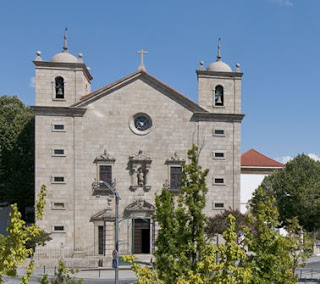 The Igreja de São Miguel and Sé Cathedral of Castelo Branco, is located in Castelo Branco parish.
The Igreja de São Miguel and Sé Cathedral of Castelo Branco, is located in Castelo Branco parish.This church dates back to the Middle Ages.
Originally of Romanesque design, it has undergone alterations throughout the centuries, being nowadays mostly visible the elements of baroque and rococo architecture. The arch of the cruise was altered to about 1608 with still visible vestiges of the original structure of the sixteenth century. The main campaigns of architectural intervention took place in 1682, visible in the lower two levels of the Baroque facade, and in 1691, with the introduction of paintings by Bento Coelho in eight chapels. In 1771, with the passage from Castelo Branco to Diocese, the church rises the cathedral and receives at that time works of improvement. In 1785 the chapel was rebuilt and in 1791 Peter Alexandrino's paintings were introduced in the altarpiece (from 1785) and in the Chapel of the Blessed Sacrament. Other beneficiation interventions were carried out in the 19th and 20th centuries.
The main façade is dominated by three portals on the ground level (lateral with triangular pediment and higher central with interrupted curved pediment), two windows flank a niche with a statue of Saint Michael on the intermediate level, circular oculus on the upper level, and two side bell towers. In the interior, the longitudinal nave presents six lateral altars in gilded carving.
It has been classified as Property of Public Interest since 1978.











